Group Directory
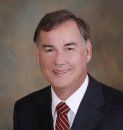
Dr. Daved van Stralen, MD, FAAP
Dr. van Stralen collaborated with Ronald M. Perkin, MD, FAAP, FCCM to create a Pediatric Intensive Care Unit at Loma Linda University Children’s Hospital. Dr. Perkin is a former US Navy Aviator who flew the A-4 in combat during the Viet Nam War. To create the PICU they used principles from pre-EMS ambulance, fire service, and US Navy Aviation which was later described by Karlene Roberts as High Reliability Organizing. He used his fire EMS background to improve the pediatric critical care transport service which had quality, safety, moral, and service problems and served a geographic area four times the size of Vermont. He also developed the nation’s first clinical academic Emergency Medical Care bachelor’s degree for paramedics that was not administrative. He then moved to a troubled pediatric nursing home where he used a fire service/EMS model with critical care principles to change it into the state’s model for subacute care. He collaborates with safety, risk, and reliability experts from wildland firefighting, business, and health care in the US and Europe to identify common approaches the individual uses to ensure safety and reliability. He has traveled extensively in Europe studying HRO in multiple industries and developed a relationship with the Bouches du Rhone Fire Service (SDIS 13) which became the source for the US Forest Service-SDIS 13 HRO collaboration.
He is an Assistant Professor of Pediatrics and a pediatric critical care physician on staff at Loma Linda University Children’s Hospital and Children’s Subacute Center at Community Hospital of San Bernardino (California); Adjunct Professor of Emergency Medical Service at Crafton Hills College, Yucaipa, California; medical director for American Medical Response, San Bernardino County; and President, Strategic Reliability, LLC. He served as Medical Director for San Bernardino County Fire Department (covering 20,000 square miles) for ten years. He worked in South Los Angeles as an ambulance man and fire department rescue ambulance driver for the Los Angeles City Fire Department in the 1970s. By one review, he is the first career paramedic to attend medical school. He has a Bachelor of Arts in Social Ecology and a Bachelor of Science in Biological Science from the University of California, Irvine; an MD degree from University of California at Irvine College of Medicine where he completed his Pediatric Residency. He completed a Pediatric Critical Care Fellowship at Children’s Medical Center and Parkland Memorial Hospital, Dallas, Texas.
Published Research:
Roberts K, Madsen P, Desai V, van Stralen D.
A case of birth and death of a high reliability healthcare organization. Quality Safety Health Care 2005;14(3):216-220
van Stralen D. High reliability organizations: Changing culture of care in two medical units. Design Issues 2008; (24): 78-90
van Stralen D, Calderon R, Lewis J, Roberts K. 2008. Changing a pediatric sub-acute to increase safety and reliability in Patient Safety and Healthcare Management, Advances in Health Care Management, vol 7:259-282 (2008) EW Ford & GT Savage [eds] Macmillan Publishing Solutions
van Stralen D. High reliability organizations: Changing culture of care in two medical units. Design Issues 2008; (24): 78-90
van Stralen D, Provansal G. The French Connection: France's wild land fire service finds success through high-reliability concepts Wildland Firefighter 2007;11(3):26-34
van Stralen D. The battle of Gettysburg and wildland firefighting: Organizational response to a dangerous environment. www.wildlandlessons.net 2010
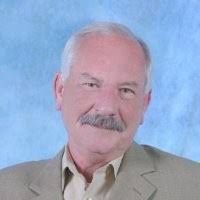
Gary Provansal, Division Chief, San Bernardino County Fire Department (Structure and Wildland Fire, EMS, Disaster Response)
Published Research:
van Stralen D, Provansal G. The French Connection: France's wild land fire service finds success through high-reliability concepts Wildland Firefighter 2007;11(3):26-34.
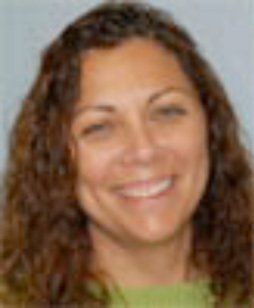
Racquel Calderon, BS RRCP, Director of Respiratory Services, TK
Published Research:
van Stralen D, Calderon R, Lewis J, Roberts K. 2008. Changing a pediatric sub-acute to increase safety and reliability in Patient Safety and Healthcare Management, Advances in Health Care Management, vol 7:259-282 (2008) EW Ford & GT Savage [eds] Macmillan Publishing Solutions

Jim Holbrook, Ed.D., Crafton Hills College
Published Research:
Roberts K, Madsen P, Desai V, van Stralen D.
A case of birth and death of a high reliability healthcare organization. Quality Safety Health Care 2005;14(3):216-220
van Stralen D. High reliability organizations: Changing culture of care in two medical units. Design Issues 2008; (24): 78-90
van Stralen D, Calderon R, Lewis J, Roberts K. 2008. Changing a pediatric sub-acute to increase safety and reliability in Patient Safety and Healthcare Management, Advances in Health Care Management, vol 7:259-282 (2008) EW Ford & GT Savage [eds] Macmillan Publishing Solutions
van Stralen D. High reliability organizations: Changing culture of care in two medical units. Design Issues 2008; (24): 78-90
van Stralen D, Provansal G. The French Connection: France's wild land fire service finds success through high-reliability concepts Wildland Firefighter 2007;11(3):26-34
van Stralen D. The battle of Gettysburg and wildland firefighting: Organizational response to a dangerous environment. www.wildlandlessons.net 2010

Jeff Lewis, LVN, LNHA, MA
Mr. Lewis is Vice President and Administrator for the Kosair Charities Pediatric Convalescent Center, Home of the Innocents, Louisville, Kentucky, began his studies and experience with High Reliability Organizing (HRO) in 2000. As Administrator for a health care facility in California he addressed significant problems identified by state regulators. The methods of HRO created a facility the state would later use as the standard for similar pediatric facilities. In Kentucky his use of HRO led to U.S. News & World Report designating his healthcare facility to be one of about two dozen of America’s best nursing homes (out of 15,000) for two consecutive years. Some of his work was invited to be published in Advances in Health Care Management (2008) and he has given international presentations of his work.
Since 1993 Mr. Lewis has worked in management, development of strategic plans, and operations for the general function of health care facilities. He has a Bachelor of Arts in [what], Oakwood College, Huntsville, Alabama, and a Master of Arts in Counselor Education, California State University, San Bernardino.
Published Research:
van Stralen D, Calderon R, Lewis J, Roberts K. 2008. Changing a pediatric sub-acute to increase safety and reliability in Patient Safety and Healthcare Management, Advances in Health Care Management, vol 7:259-282 (2008) EW Ford & GT Savage [eds] Macmillan Publishing Solutions
Joe Martin, Battalion Chief (ret.), Los Angeles Fire Department
Chief Martin served 30 years in the Fire Service and Emergency Medical Service (EMS) including paramedic service. He has experience in several disasters (EMS supervisor for the first 24 hours of the Los Angeles riots, the Northridge Earthquake, and as a leader of a strike team during the Southern California Fire Storms). He has also managed or participated in more than 30 large-scale multiple casualty incidents of greater than 20 victims. With LAFD he served as Quality Improvement officer, training officer for new paramedics, drill master and recruit training chief. He also assisted in development of the airborne (helicopter) rescue teams for LAFD drawing upon his experience as a Parajumper (Pararescue technician) for the US Air Force. The last 13 years with the fire service he based his approach on a high reliability model. He was also principal in a company that provided civilian corporations with emergency and disaster training. As a Parajumper his duties included standby in the Azores for the Apollo space program launches should a launch be aborted at take-off.
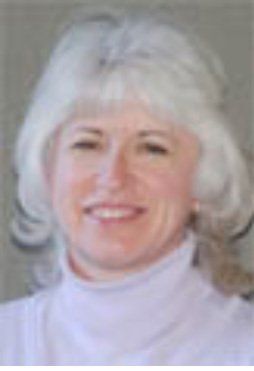
Febra Johnson, RD CNSD, Clinical Dietitian Manager, Loma Linda University Medical Center & Children's Hospital
Ms. Johnson uses High Reliability to ensure nutritional support for children, from handicapped to critically ill both in the hospital and as outpatients. This is an area where risk is not always recognized as consequences may be indirect, as in severity of or recovery from illness, or delayed, as in greater risk for infections or decreased wound healing. She also uses High Reliability as a method to work with her staff and professional colleagues to serve those who care for children. Her early exposure to High Reliability was in the pediatric intensive care unit Loma Linda University Children’s Hospital. She is the Clinical Pediatric Dietitian Manager for Loma Linda University Children’s Hospital, Loma Linda, California and received her Bachelor’s of Science in Dietetics from Andrews University, Berrien Springs, Michigan.
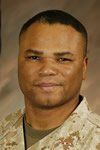
Dwayne Thomas, A.S. Respiratory Care, Kindred Hospital, Albuquerque, NM; Chief Warrant Officer, US Marine Corps (retired)
Mr. Thomas is currently a Respiratory Care Practitioner working in the state of New Mexico where he is a supervisor for respiratory care. This also includes providing consultation, instruction, and/or technical direction to medical, nursing, and other staff members during medical emergencies. Prior to his career in healthcare he served as a Chief Warrant Officer 3, United States Marine Corps, where he was Director, Personnel Operations, I Marine Expeditionary Force, Headquarters Group, Camp Pendleton, CA. During his Marine Corps service he was introduced to High Reliability Organization principles via John Boyd's OODA Loop which he used in the support and training of Marines. While in the Marine Corps he was awarded the Meritorious Service Medal, Global War on Terrorism Expeditionary Medal, Global War on Terrorism Service Medal, Joint Service Commendation Medal, Navy and Marine Corps Commendation Medal w/4 Gold Stars (5 Awards), Navy and Marine Corps Achievement Medal, Presidential Unit Citation.
Mr. Thomas received his Associate of Science, Respiratory Care, from Concorde Career College (San Bernardino, CA)

Thomas A. Mercer, RAdm, USN (retired)
RAdm Mercer initiated the studies of High Reliability when he invited academicians from the University of California, Berkeley, to study his crew with the goal of improving their performance. At the time (July 1983-March 1986) he was Captain of the USS Carl Vinson (CVN 70). Rather than offer methods to improve, the academicians codified RAdm Mercer’s command philosophy and methods as a High Reliability Organization (HRO). He flew 255 Vietnam Combat Missions, has 970 carrier arrested landings, and has 3,700 hours in the A-4C and A-7E. His awards include the Defense Distinguished Medal, Distinguished Service Medal (two awards), Defense Superior Service Medal, Legion of Merit (two awards), Distinguished Flying Cross (three awards), four individual Air Medals, 25 Strike Flight Air Medals, and six Navy Commendation Medals.
RAdm Mercer was commander of Subic Bay Navy Base when Mt. Pinatubo threatened Clark Air Base. Evacuees from Clark came to Subic but on the day of the eruption a typhoon hit Subic endangering people from both bases who were then evacuated on US Navy ships. RAdm Mercer directed this activity while also assisting the Philippine people and government.
He had three combat deployments to Vietnam (USS Franklin D. Roosevelt, CVA 42, and USS Kitty Hawk, CVA 63), served as Executive Officer/Commanding Officer of VA-82 on the USS Nimitz (CVN 68), and had command of the USS Guadalcanal (LPH 7) and USS Carl Vinson (CVN 70). As a Flag Officer, he first served on the Joint Chiefs of Staff as Vice Director for command and control, interoperability, and operational planning (J6/J7). He then became Commander of Carrier Group Seven (Nimitz, Midway, and Ranger Battle Groups) followed by Naval Forces Philippines. He retired from the US Navy after serving as Superintendent, Naval Postgraduate School, Monterey, CA. He was also Executive Director of the Center for Risk Mitigation at the University of California, Berkeley.
RAdm Mercer graduated with distinction from the US Naval Academy and received his Master of Science Degree in Aeronautical Engineering from the Naval Postgraduate School, Monterey, CA. He also graduated from the Navy’s nuclear propulsion school.
Published Research:
Rochlin GI, Todd R. La Porte TR, Roberts KH. The Self-Designing High-Reliability Organization: Aircraft Carrier Flight Operations at Sea. Naval War College Review 1987
James "Jim" Patrick Denney, MA,
Capt. LAFD and OSS Group
Mr. Denney was a founding member of the OSS Group EMS, Disaster and Terrorism Response (1947-2006). He served on staff with Louisiana State University, National Center for Biomedical Research and Training and the Academy of Counter-terrorism. He was a member of the Department of Defense, Defense Science Board (DSB) Civil Integration and Response Panel for Terrorism and Transnational Threats. He was also an Advisor to the Defense Advanced Research Project Agency (DARPA) ENCOMPASS program, the Defense Science Research Council (DSRC) and the RAND Advisory Panel to Assess Domestic Response Capabilities for Terrorism Involving Weapons of Mass Destruction. He has served on numerous local, state, and national committees for Emergency Medical Services and disaster. He retired with the rank of Captain from the Los Angeles City Fire Department where he served during the riots in South Los Angeles and two major earthquakes. He retired as an EMS District Commander and Department Paramedic Coordinator. He served with the US Navy Seabees with two tours in Viet Nam, one in a high combat area. He also served as a Deputy for the Los Angeles County Sheriff’s Department. He received his BA in Business and an MS in Health from Emerson College, Ontario, Canada.
Academic Associates

Karl E. Weick, PhD, University of Michigan
Dr. Weick is the Rensis Likert Distinguished University Professor of Organizational Behavior and Psychology at the University of Michigan Stephen Ross School of Business. His research interests include sense making under pressure, medical error, hand offs in extreme events, high reliability performance, improvisation, and continuous change. He is co author (with Kathleen Sutcliffe) of Managing the Unexpected: Assuring High Performance in an Age of Complexity. Weick received his BA at Whittenberg College and his MA and PhD at Ohio State University.

Kathleen Sutcliffe, PhD, University of Michigan
Dr. Sutcliffe is Professor of Management and Organization at the University of Michigan Stephen Ross School of Business. Her research is concerned with organizational reliability and she is currently examining medical mishaps and errors. She is the co- author (with Karl Weick) of Managing the Unexpected: Assuring High Performance in an Age of Complexity. Sutcliffe holds a BA in Education from the University of Michigan, a BS in Nursing from the University of Alaska, an MSN from the University of Washington, and a PhD in Management from the University of Texas, Austin.

She is also Director of the Center for Catastrophic Risk Management at Berkeley. Roberts earned her bachelor’s degree in Psychology from Stanford University and her Ph.D. in Industrial Psychology from the University of California at Berkeley. She also received the docteur honoris causa from the Universite Paul Cezanne (Aix Marseilles III). Since 1984 Roberts has investigated the design and management of organizations and systems of organizations in which error can result in catastrophic consequences. She has studied both organizations that failed and those that succeed in this category.
Some of the industries Roberts has worked in are the military, commercial marine transportation, health care, railroads, petroleum production, commercial aviation, banking, and community emergency services. Two of her recent publications are “Designing for High Reliability: The Birth and Evolution of a Pediatric Intensive Care Unit.” Organization Science (2006) 17, 239-248. (with Peter Madsen, Vinit Desai, and Daniel Wong) (Winner of the Emerald Management Citation of Excellence, 2006); and “Reinventing Flood Control” Tulane Law Review, (2007) 81, (with Daniel Farber, Robert Bea, Edward Wenk, and Kofi Inkabi). She has been on a number of National Research Council (NRC) and National Science Foundation (NSF) committees and panels. She is currently a member of the Association of Space Explorers panel on Earth Vulnerability to Near Earth Objects (asteroids). She consults with a number of U.S. federal agencies and industries.
Roberts has consulted in the areas of human resource management, staffing policies, organizational design, and the development of cultures of reliability. Recently she has consulted with the military, in the health care industry, in software development, and in the financial and insurance industries. She testified before the Columbia Accident Investigation Board and recently testified to the U.S. National Transportation Safety Board. Roberts is a Fellow in the American Psychological Association, the Academy of Management, and the American Psychological Society. She has contributed to policy formation for the Federal Aviation Administration, the U.S. Coast Guard, the U.S. Navy, the Department of Energy, and the Mineral Management Service of the U.S. Department of Interior.

He began his engineering career with the U.S. Army Corps of Engineers in 1954. He then worked for Shell Oil, Shell Development, and Royal Dutch Shell companies in a variety of engineering, construction, operations, and research assignments around the world. In 1977, helped found the Ocean Services Division of Woodward-Clyde Consultants where he became Chief Engineer and Vice President of the company. In 1981, he helped found the Ocean Engineering Division of PMB - Bechtel where he became Senior International Consultant and Vice President. These companies provided integrated ocean engineering and contracting services for a wide variety of companies and governments around the globe. He was appointed to the faculty of the University of California Berkeley in 1989. His experience includes design of structures and foundations (fixed and floating platforms, pipelines), construction (welder, concrete worker, carpenter, superintendent, inspector), operations (drilling, production, exploration), maintenance (inspections, repairs), and management (engineering, operations, research & development) in assignments in more than 60 locations around the world (lived in 13 different countries). Since his appointment to the University of California Berkeley, his research and teaching have focused on risk assessment and management of engineered systems with specialization on human and organizational factors, criteria and guidelines for design and re-qualification, and margins of quality (factors of safety).
Practice Associates

Dr. Slagmolen’s main focus area is Reliability Seeking change processes in organizations that try to become a High Reliability Organization. He develops and facilitates intervention strategies to assist learning by managers and professionals of how to behave and organize their organization to make it more reliable, more safe, and more professional.
He is Managing Partner of a Dutch consultancy firm Apollo13 consult which works primarily for industrial, not-for-profit and professional organizations in the Netherlands and in Europe. He studied electronics at the Technical University in Delft and business administration at the Erasmus University in Rotterdam. He finished his PhD on the Analyses of ICT-narratives in organizations and society.
Current consultations include:
Dutch ProRail (the Dutch national rail infrastructure manager): in 2006 he developed with internal experts the concept of a shared control centre for all parties involved in the Dutch Rail sector. Now he and his colleagues are actively coaching managers and operators to develop collective mindfulness on the job, in real time, and with direct results. Management discovers what they collectively need to develop in order to create a control centre that is able to act on weak signals and unexpected incidents much earlier and much more effective.
SABIC (a multinational in the fields of chemical and steel): we started in 2009 with this European program to bring 13 sites to a proactive and generative Safety culture. We start with an assessment consisting of three methods that in itself demonstrates mindful organizing. People are invited to use their own examples, incidents and successes do develop a Safety Culture where people learn from incidents and interact blame free when they notice unexpected behaviour. After five assessments management and operators slowly start to grasp the concepts of HRO.
ThyssenKrupp (a multinational in the fields of steel and services): we use specific HRO methodologies like the Staff Ride to demonstrate and involve safety technicians and managers in HRO thinking and acting. We achieved to open eyes to worlds they never thought of: dysfunctional behavioural patterns, dominant focus on technology, fixing problems and not learning from them, and the like. All actions are videotaped to facilitate learning.
Schiphol Amsterdam Airport (one of the largest airports in Europe): after two years of coaching we slowly developed a group of motivated professionals that dare to think out of the box. We managed to let them escape from traditional management concepts and control driven organizational concepts. Slowly they start to involve their managers and do look at incidents in an HRO way. This is truly a process of re-socialization towards HRO: heedful relations, shared concepts, informed culture!

Dr. Gebauer is a senior consultant for management and organizational development as well as cultural change. Her mission is to translate HRO thinking to classical industries like production, banking, services and technology etc. Annette runs her own consultancy in Berlin (Beratung für Corporate Learning) serving large DAX-companies like ThyssenKrupp, Sabic, Deutsche Telekom, SAP etc. Beratung für Corporate Learning collaborates with Apollo 13 as well as Management Zentrum Witten. Annette is member of the program committee of the first European HRO conference that will take place in autumn 2011.
Dr. Hare is a forensic clinician with the San Francisco Forensic Institute. He served for 24 years with the Oakland Police Department where he retired as a Captain of Police. He served as incident commander at numerous critical incidents in Oakland including crime scenes and natural disasters. His experience as a crisis/hostage negotiator and leader of the Hostage Negotiation Team led to his guidelines for heedful innovation in challenging incidents that do not respond to traditional techniques. The U.S. Army, the U.S. Department of State, London Metropolitan Police, and other law enforcement agencies around the world have adopted these principles.
Dr. Hare is a retired lieutenant colonel, U.S. Army Reserve who served as an Infantry commander in Vietnam, as aide-de-camp to the Chief of Staff, U.S. Army Vietnam, and in Operation Desert Shield/Desert Storm. He is a visiting scholar with the Center for Catastrophic Risk Management (CCRM) at the University of California at Berkeley. He has published articles on crisis negotiation and critical incident management in military and civilian journals and texts and in a report to the U.S. Congress. Dr. Hare has a Bachelor of Arts in Psychology from the University of California at Berkeley, a Masters in Science in Counseling from California State University, Hayward, and a Masters of Science in Psychology and a Doctor of Psychology from Wright Institute in Berkeley.
Dr. Kowal is an analyst for the Institute for Defense Analysis where he conducts research for the Department of Defense in a variety of areas that include human factors assessment of enhanced human performance technology to the development of strategies to assess intentions of terrorist groups. Before that he was command Psychologist for a Special Mission Unit and the US Army Intelligence Command at Ft. Belvoir, VA. He has conducted training in negotiation strategies, conflict resolution, stress operations, and remote profiling of target individuals.
He co-authored a study of the “at risk” factors of individuals who committed espionage against the US during the 1980s, and the NRC recently published his article entitled: “The Insider Threat.” Kowal received his BS in Psychology from the University of California, Santa Barbara, his MA in Physiological Psychology from California State University, San Jose, and his PhD in Physiological Psychology from The Claremont University, Claremont, California. He received further clinical training at Boston University and a post-doctoral residency in neuropsychological assessment at Walter Reed Medical Center and Georgetown University Medical School, Washington, DC.

Dr. Spurlock is President and CEO of Convergence Health Consulting, Inc. and the executive director of Beacon - The Bay Area Patient Safety Collaborative. He also is an Adjunct Associate Professor at Stanford University.

Christopher A. Hart was sworn in as a Member of the National Transportation Safety Board on August 12, 2009 and designated by the President for a two-year term as Vice Chairman of the Board on August 18. Member Hart joined the Board after a long career in transportation safety, including a previous term as a Member of the NTSB. Immediately before returning to the Board, Member Hart was Deputy Director for Air Traffic Safety Oversight at the Federal Aviation Administration. He was previously the FAA Assistant Administrator for the Office of System Safety. He served as a Member of the NTSB from 1990 to 1993.
After leaving the Board, he served as Deputy Administrator of the National Highway Traffic Safety Administration, before moving to the FAA in 1995. From 1973 until joining the Board in 1990, Member Hart held a series of legal positions, mostly in the private sector. He holds a law degree from Harvard University and Master’s and Bachelor’s degrees in Aerospace Engineering from Princeton University. He is a member of the District of Columbia Bar and the Lawyer-Pilots Bar Association. Member Hart is a licensed pilot with commercial, multi-engine and instrument ratings. Member Hart’s family has a tradition of accomplishment in the field of transportation.
His great uncle, James Herman Banning, was the first African-American to receive a pilot’s license issued by the United States government, in 1926. His term expires December 31, 2012.
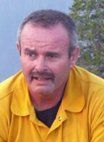
Mr. Kleinman currently serves as Operations Section Chief, National Incident Management Organization, Fire and Aviation, Washington Office, US Forest Service, Department of Agriculture. He responds throughout the US to complex wildfires, natural, and national disasters. His functional area of expertise is as Operations Section Chief, Incident Commander, and as Team Leader. He contributes mission analysis, organizing for successful mission accomplishment, and primarily leading and preparing the responders in common goals and unity of efforts. He has actively participated in the development and delivery of Wildland Fire Staff Rides in the Western US and led the program development and delivery of the Gettysburg Staff Ride for Wildland Fire and Fire Service managers and leaders
Since 1995 Mr. Kleinman has responded throughout the US assigned to complex wildfires, natural, and national disasters because of his key area of expertise as Operations Section Chief, Incident Commander, and Team Leader. The key to success in these responses has been mission analysis, organizing for successful mission accomplishment, and primarily leading and preparing the responders in common goals and unity of efforts. In September of 2011 Dan he led his team on a devastating wildfire in Bastrop County, Texas. This was a unified command incident with command representation coming from Bastrop County, the state of Texas, and Kleinman. This fire burned over 34,000 acres, over 1600 homes lost, affected and threatened infrastructure, and two civilian lost their lives. This incident continued to threaten the wellbeing of the citizens over the course of the next three weeks. In this situation Kleinman had no jurisdictional responsibility but provided command and control aspect of incident management in the response phase. In other situations he and his team may provide expertise in many organizational development aspects and act more in a support, advisor, or consultant role to a variety of organizations either during incidents or in the preparedness phase.
He began his career in wildland fire and all hazards experience in 1977 having experience with Engines, Fire Prevention, Fuels Management, and Hotshots. He was a member of the Fulton Hotshots for 13 years, 8 years as Superintendent, before his promotion to Battalion Chief (AFMO) in 1995, Division Chief (DFMO) in 2000, and NIMO Operation Section Chief in August of 2006. He has been actively involved with Incident Management Teams in the positions of Division/Group Supervisor, Operations Branch Director, Operations Section Chief, and Incident Commander since 1990. Complex incident management experience includes many wildland fires, several missions of national significance including the 9/11 attack on the Pentagon, Columbia Shuttle Recovery, Greensburg (Kansas) Tornado, and four Hurricanes. Dan also performed as an Operations Section Chief Type 1 on wildfires in Australia in 2007. During his career, he has been actively involved as an instructor in wildland fire suppression, incident management, and leadership. Currently he is a member of the NWCG Leadership Committee working on the development and delivery of Advanced Leadership programs.
Published Research:
Wildland Fire Staff Rides
van Stralen D. The battle of Gettysburg and wildland firefighting: Organizational response to a dangerous environment. www.wildlandlessons.net 2010

SDIS13 is one of the busiest fire departments in France with over 110 000 runs each year, involving all hazards including underwater, alpine, floods, hazardous materials, structure fires, BLS/ALS, and wildland fires. With more than 25 years of experience, Colonel JORDA manages over 1300 professional and 3500 volunteer firefighters. Awarded with the Legion of Honor, he is one of the most experienced fire Chiefs in France, regularly serving as Area Commander and Incident Commander on the most complex operations.
In partnership with UC Berkeley and Aix-Marseille University, Colonel Jorda has been implementing HRO principles in training and operation since 2006, in strong relationship with the US Forest Service and recently Australia's Bushfire CRC.
Luc Jorda holds a Master’s degree in Engineering.

David Christenson has been the Assistant Center Manager of the U.S. Wildland Fire Lessons Learned Center since 2002. He has focused on promoting organizational learning, implementing high reliability organizing, and creating a widely used knowledge management system for the nation’s wildland fire community. He coaches incident management teams on practical HRO implementation and is a co-chair of the French/USA HRO in IMTs Project. He has given presentations in Sweden, Norway, Spain, Greece and France in addition to the U.S. on these subjects.
He earned a Masters of Applied Geography with honors from New Mexico State University in 2000 after a career in the US Air Force developing teams working with jet fighter aircraft. He began working with HRO while assigned as the NCOIC of the Quick Reaction Alert Interceptor Force at Soesterberg AB, Holland in 1980. While working full time on his masters, he was also a full-time conservationist specializing in remote sensing and GIS analysis. That position was co-sponsored by both the USDA’s Natural Resources Conservation Service and the research division of the National Agricultural Statistics Service.
Before working in wild land fire with the US Forest Service, he was a national program manager for a private sector spatial decision support systems development firm.

Randy Cadieux graduated from the Naval Air Training Command Multi-Engine training program and received his designation as a Naval Aviator in 1996. In addition to years of aviation and flight leadership experience he has extensive experience in safety and operations management. While serving as the Director of Safety and Standardization for a Navy and Marine Corps aviation training squadron, he used Operational Risk Management methods to develop mission planning tools for hazard mitigation and to help the unit achieve levels of acceptable risk. Randy also has several years of Operations Management and Project Management experience, serving as a Marine Aircraft Group assistant operations officer, where he provided oversight for the safe operations of 10 squadrons.
Randy also has extensive experience training Student Naval Aviators flying high-risk training missions. This training prepared students for future operational duty in the Fleet Marine Forces and Naval Forces and for increased responsibility and leadership duties. This training included mentoring, Crew Resource Management (CRM), and Operational Risk Management (ORM). While serving as the Marine Officer Control Officer-In-Charge at Marine Aviation Training Support Group-21, he managed aviation officer training schedules and mentored officers using a focus on safety leadership and building a culture of high-reliability. During this time he developed a High-Reliability training curriculum focusing on judgment, decision-making, mentoring, ORM and CRM, attitudes and character, and team problem solving.
Randy has been qualified in several aircraft, including the KC-130 Hercules, the UC-12B, the T-34C, and the T-44A, and has been designated as a KC-130 and UC-12B Transport Plane Commander and a T-34C Instructor Pilot. His KC-130 experience includes operating the KC-130J, one of the Marine Corps’ newest automated aircraft, during a combat flying tour in support of Operation Iraqi Freedom. His T-34C instructional background includes extensive experience training novice student aviators how to safely and successfully operate high-performance military training aircraft in a high-hazard environment. Randy also has experience participating in transformational safety as a result of technology change. He was part of the first squadron to transition to the KC-130J Hercules, which is a highly automated version of the legacy airlift and refueling workhorse of the Marine Corps. He also oversaw various safety elements during the transition to the T-6B aircraft while he was the Director of Safety and Standardization at Training Squadron Six.
Randy has spoken at several high-visibility conferences, including the 2011 and 2012 International High-Reliability Organizing Conferences, the 2012 National Electrical Contractors Association (NECA) Safety Professionals Conference, the 2013 American Society of Safety Engineers Region IV Professional Development Conference, and numerous safety stand-downs in various Marine Corps and Navy aviation units.
Randy holds a Bachelor of Arts in Political Science, with a Minor in Philosophy and a Master of Science in Information and Telecommunications Systems Management, with a concentration in Project Management. He also holds a Master of Engineering in Advanced Safety Engineering and Management from the University of Alabama at Birmingham. He is a graduate of the U.S. Navy’s School of Aviation Safety Aviation Safety Officer’s course, the Navy’s Crew Resource Management Instructor School, and the Naval Security Manager’s Course.
His personal awards include the Meritorious Service Medal, the Navy and Marine Corps Commendation Medal, the Navy and Marine Corps Achievement Medal, and the Air Medal with Numeral 7 Strike/Flight Awards. Randy has also earned numerous unit awards and several awards for his participation in the Global War on Terror, including the Iraq Campaign Medal and the Global War on Terrorism Service Medal.
Randy Cadieux is the Founder of V-Speed, LLC, which is a risk management, leadership, resilience, and human performance training and consulting company. In addition to leading V-Speed, LLC Randy is also the Program Manager and a faculty Instructor for the University of Alabama at Birmingham (UAB) Master of Engineering in Advanced Safety Engineering and Management (ASEM) program.

Dr. Vidal has started his career on large scale/high risk projects with Bouygues Offshore, the French leader in offshore constructions. 10 years later, he engaged in HRO research and co-founded a consulting company specialized in risk management. A Fulbright laureate in 2006 and 2007, Dr. Vidal has conducted at UC Berkeley a five year Franco-American research program on large scale fire management, applying HRO frameworks both in France, with Bouches du Rhone Fire department (SDIS 13) and the National training school (ECASC) and in the United States, with the US Forest Service, NAFRI and the Lessons Learned Center. Dr. Vidal is currently conducting research programs with SDIS13 aiming at measuring reliability enhancing processes in simulation training platforms.
He received a Master’s degree in Science and Executive Engineering from the French "Grande Ecole” Mines de Paris, a Master’s degree in Management Sciences and his Ph.D. from Aix-Marseille University (France).
He is co-principal of the Chief Executive’s Group, a public safety consulting firm. Prior to this he served as Assistant General Manager for Public safety for the Oakland Regional Park System, the nation’s largest regional park. Sarna’s BA is from American International College (cum laude) and his MA in Sociology is from Boston College.

Ms. Moss became an EMT in 1980 and later became a field training officer then a field supervisor for paramedic services. She was Director of EMT instruction at Canterbury Career School in 1991. In 2001 she was selected to oversee the Quality Improvement Program for an EMS provider using the methods of HRO. She now uses these methods for a county EMS agency to ensure quality service and patient safety. She is also an EMS instructor for Victor Valley College. She is currently Clinical Education Specialist and Quality Improvement, American Medical Response, San Bernardino, CA. She has her Associate of Science in EMS, Crafton Hills College and a Bachelor of Science in Business Management, University of Phoenix, San Bernardino, CA.
Strategic Reliability, LLC, formed in 2010 after several organizations searched for resources to change toward high reliability. These organizations approached Dr. van Stralen and RAdm. Mercer through this website asking for workshops and training. Strategic Reliability, LLC, now provides training and workshops for organizations who seek strength through HRO in risky or uncertain environments. HRO offers these organizations attributes and characteristics that will strength their internal systems for uncertainty or the unexpected. Strategic Reliability, LLC, works with those organizations to translate to their existing culture to the methods demonstrated by the best of the US Navy aircraft carrier flight operations and public safety/EMS.
We find that organizations can efficiently and effectively become a Reliability Seeking Organization through modeling attitudes, teaching methods for decision making with imperfect information, and modulating threat responses.

